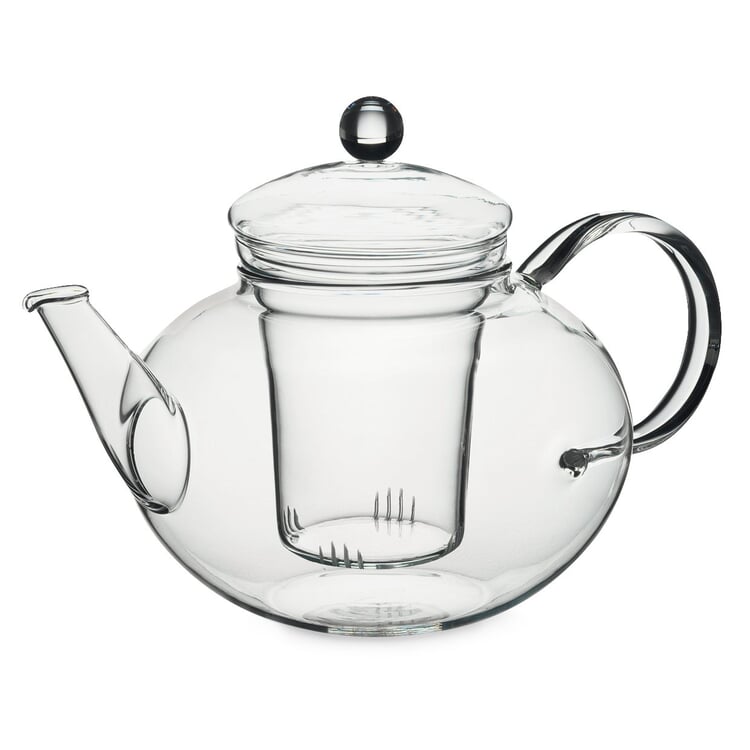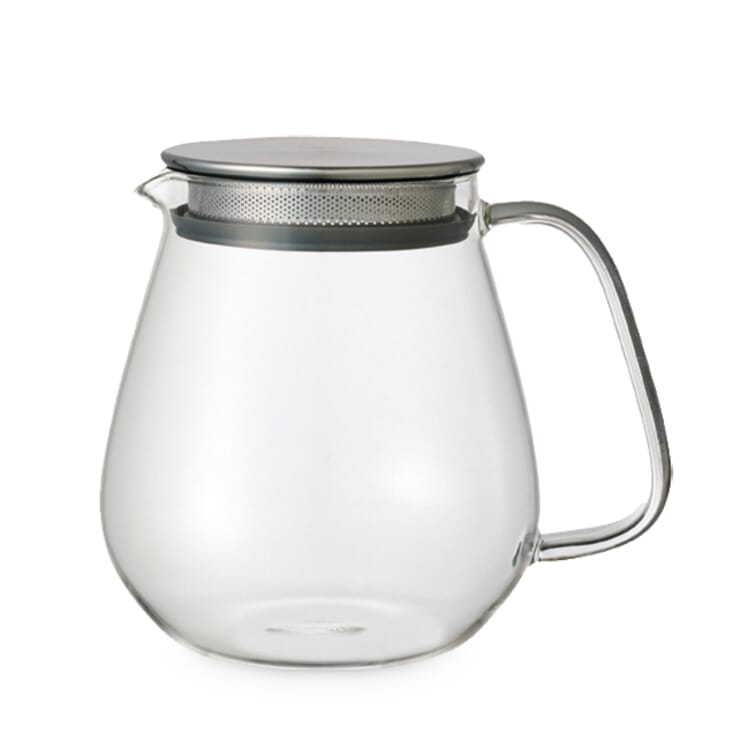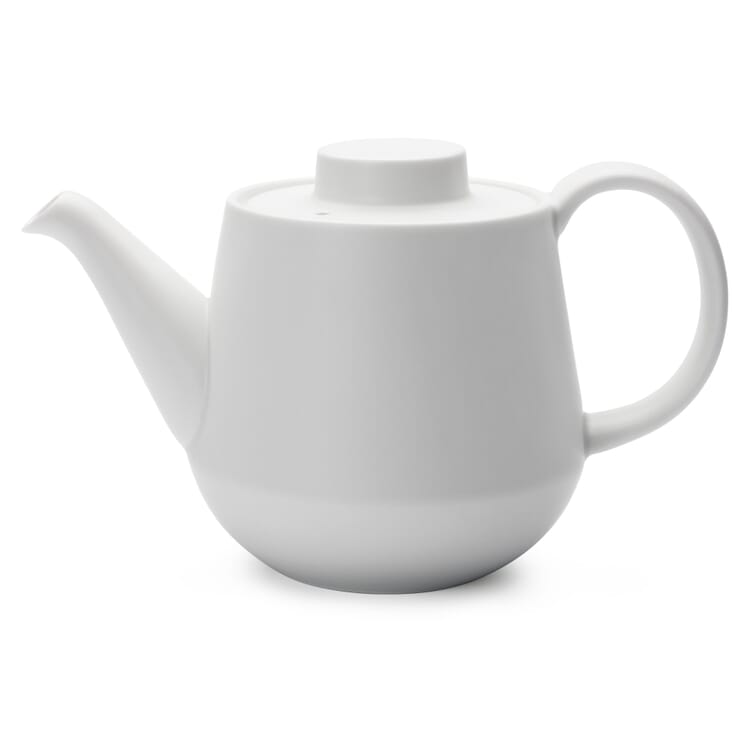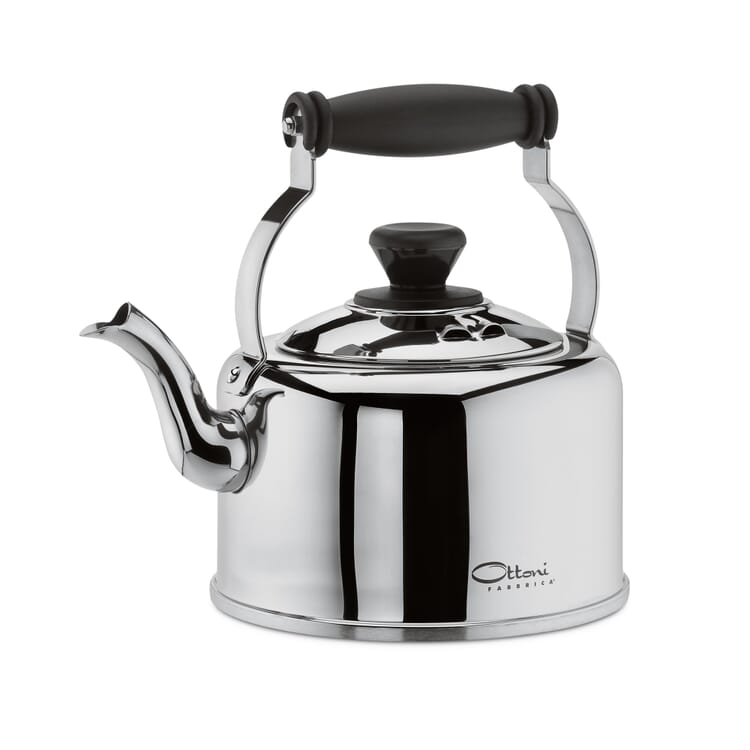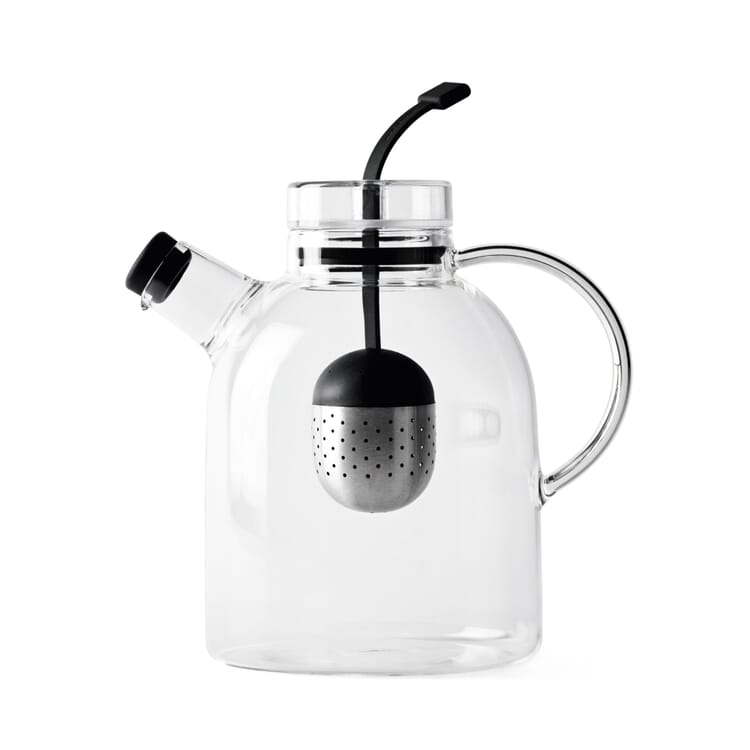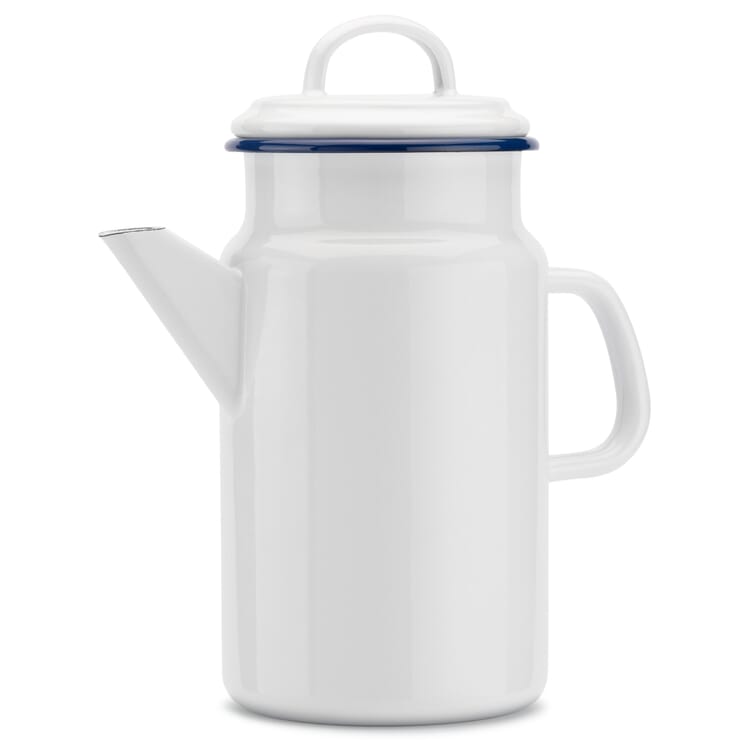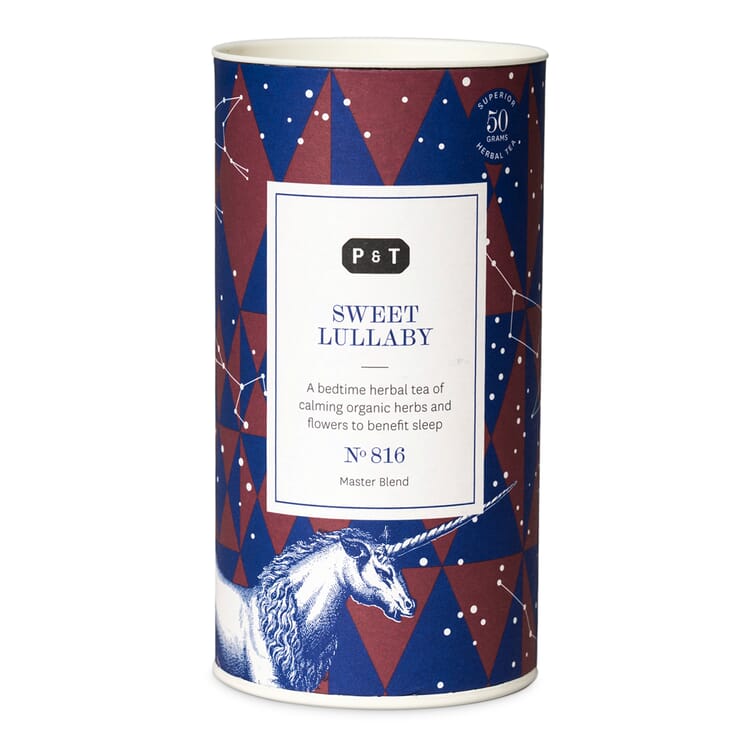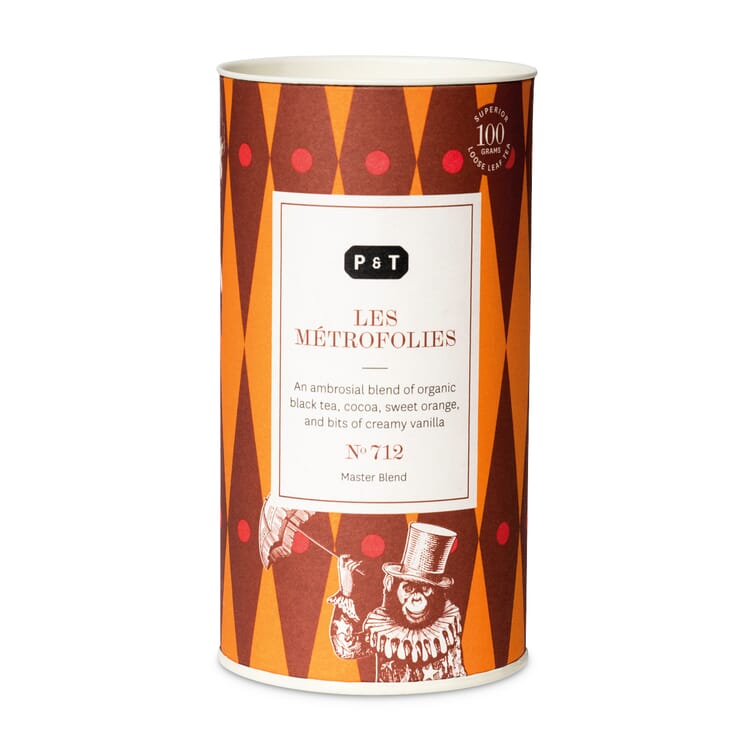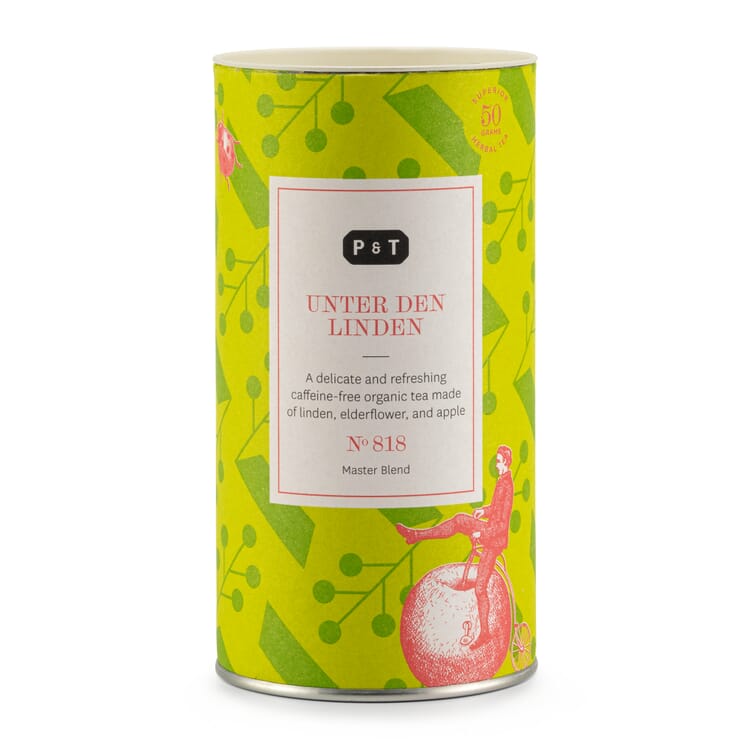The choice of teapot - a science in itself
A teapot is a teapot is a teapot. One would think. But a closer look at the subject reveals that this wisdom - loosely based on Gertrude Stein - falls short. Anyone who takes a closer look at the subject of tea preparation will quickly realize that the shape, material and composition of the spout and (if present) the strainer of a teapot can have a decisive influence not only on the convenience of use, but also on the tea aroma. Topics that are hotly debated by enthusiasts around the globe time and again - not for nothing is the preparation of tea ceremonially occupied or ritualized in many places - on the other hand, the scientific study of the teapot is also more widespread than one would generally assume.
They are available in the classic porcelain, in the more open-pored ceramic and clay variants, in very distinguished silver, in cast iron they often come from Japan, pewter is no longer found so often, glass, on the other hand, is now quite common, and the purist sometimes reaches for stainless steel. From a purely visual point of view, a favorite is often quickly chosen. But the question of which material is best suited for a teapot goes far beyond such banal motifs. Glass and porcelain dominate the Manufactum range - for good reason. Both materials are easy to clean due to their smooth exteriors and do not (or at least hardly) take on any flavorings. They are therefore suitable for use with alternating types of tea, whereas possessive teapots made of porous or unglazed materials are often used exclusively for one variant due to their tendency to bind aromas to themselves. Glass and porcelain teapots prove particularly useful when used with green and white tea, which should be prepared at lower temperatures than their black relative. In general, however, both types of teapots are tolerant and compatible with all forms of tea. Those who like to bring variety to the tea table are well advised to use one of these. Of course, the tea purist can also feel completely free and put his teapot to a dedicated use.

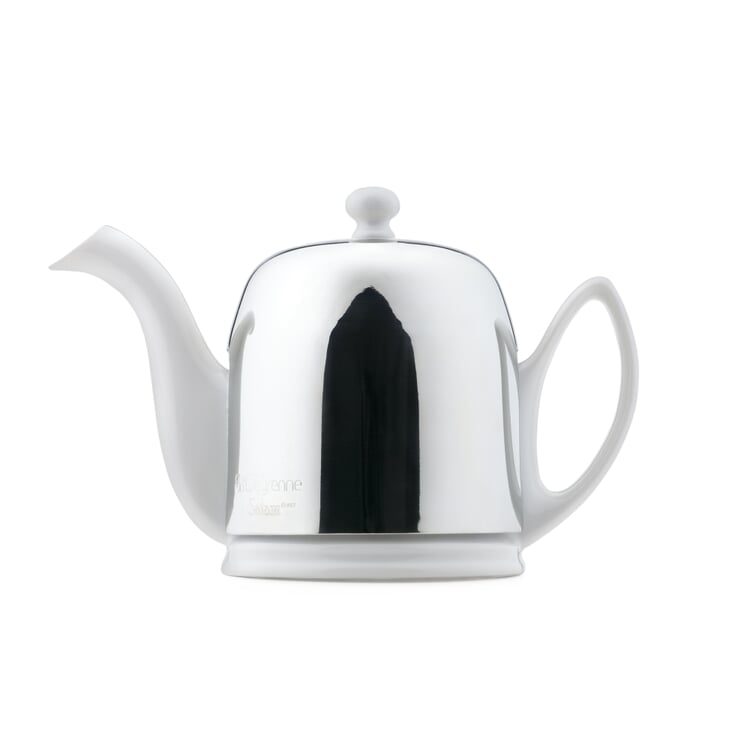
Originally from France: a classic from 1953
Mantle jug porcelain
The principle is simple: the white porcelain pot is joined by a precisely matching hood made of stainless steel, which is known not to be a good conductor of heat, lined on the inside with a felt made of 50% cotton and 50% rayon. This provides extremely effective insulation and under the mantle whatever is in the pot - coffee or tea - stays warm for a longer time. Our stoneware coffee filter fits on the opening of the pot.
Belly it must be. Free float for the teapot
Have you ever wondered why teapots often look squat and stocky? The bulbous shape is by no means an expression of coziness - even if that doesn't seem so far-fetched in the context of the relaxation that a good cup of tea can promise - it rather proves the tried-and-tested direction of travel from function to form. Traditionally, tea has always been brewed loose in the pot. This is because the more freely the tea leaves can move around inside the teapot, the more fully the aroma unfolds. On the one hand, the dried leaves expand to twice their size during the infusion, and on the other hand, they love to be surrounded by hot water from all sides. Who would not have an understanding for this - in the pleasantly warm bubble bath, after all, also the human being shows space-consuming tendencies. Consequently, a wide and rounded shape of the pot body supports the tea in its personal development. And who would want to deny it to him? Now the free-floating variant of tea preparation is the most aromatic, but admittedly also not the most comfortable. Unless the device has a built-in filter at the outlet to the spout, as our Japanese teapot does, and catches the leaves as they are poured, a strainer must still be interposed before serving. The teapots in the Manufactum range therefore optionally offer - as an intermediate solution, so to speak - spacious strainer inserts that give the tea leaves as much freedom as is technically possible.
Exciting, but tension-free. Vessels from "Jena" glass
Borosilicate glass is odorless as well as tasteless and suitable for use in the oven and microwave, on the stove, in the refrigerator and dishwasher. (Follow the manufacturer's care and use instructions).

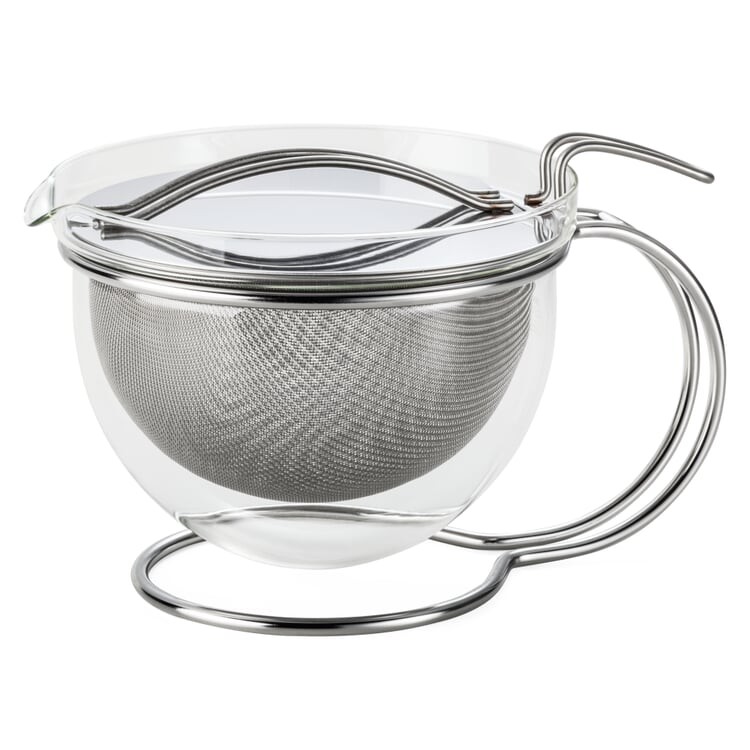
The teapot by the designer Tassilo von Grolman is striking proof of a design that is undisputed in terms of design, in which the form does amazing justice to the purpose. The teapot itself, in the form of a large hemisphere made of heat-resistant Duran glass, and a tea strainer that takes up the entire volume of the teapot ensure that the tea and all its active ingredients can unfold completely during brewing - because it "floats freely", so to speak. The glass teapot with removable lid is suspended in a metal frame, which also serves as a handle and stand. It can be easily detached from the frame for thorough cleaning. Made in Mettmann.
The pitfalls of grommets. Everything must get out
The spout, sometimes affectionately called a beak or spout, is by no means just a pretty accessory to a proud teapot, as a tale by the Danish fairy tale poet Hans Christian Andersen might lead readers to believe. It is responsible for dispensing the color and aroma substances that tend to congregate at the bottom of the teapot, which is why the spout should, in the best case - at least that is what the laws of physics say - merge with the teapot body far below. In addition, the spout is the linchpin of what is probably the most extensively researched scientific phenomenon in the hot beverage sector: the teapot effect. Everyone knows it, and hardly anyone knows how to prevent it: the cheeky drop that pours onto the freshly washed tablecloth instead of directly into the cup - ominously along the body of the teapot. Since 1938, countless studies have been devoted to this curiosity, which can ultimately be explained quite clearly by the interplay of outflow speed, angle, fill level, material of the teapot and surface tension of the drop. According to the latest findings, anyone who finds this state of affairs distressing has the option of buying a teapot with a tear-off edge instead of a rounded end, can attach a water-repellent strip of scotch tape to the underside of the spout, or uses a conventional drip catcher. Ultimately, therefore, when buying a teapot, you should decide entirely according to your personal taste - regardless of whether it is of an aesthetic or gustatory nature. Both are, after all, very subjective. And no scientist in this world will find a formula that is valid for all tea drinkers. The main thing is that it tastes good. And it tastes good to you.

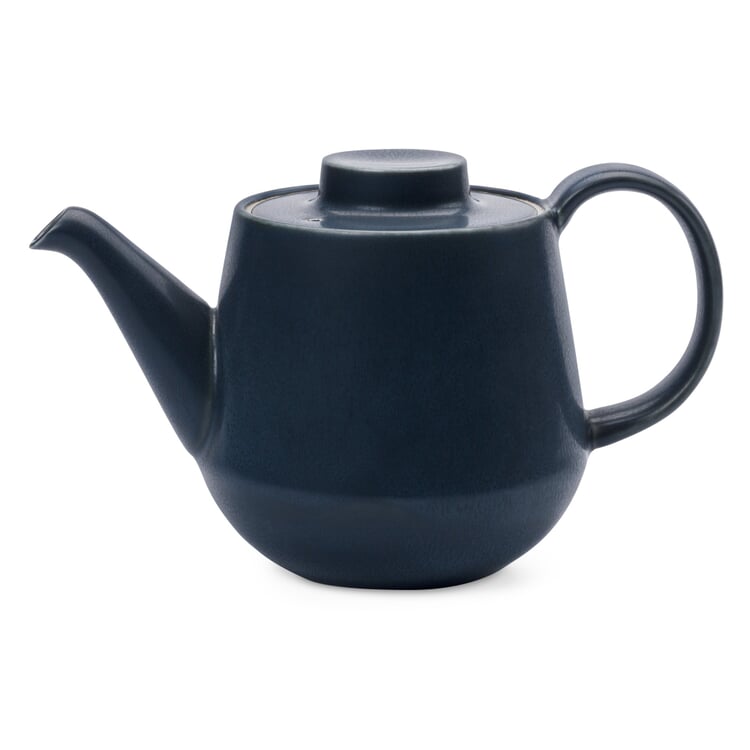
Brief inner reflection. Japanese tea set
Japanese teapot, Blue
The tea ceremony, as it is traditionally celebrated in Japan, has a centuries-old history. Its rules are many and varied. For those who take part, they point the way - sado, the way of tea - and are perceived as almost meditative, because that's what the ritual enjoyment of the hot beverage is all about: finding peace, leaving everyday life behind and practicing a moment of mindfulness. Our tea service may, quite unceremoniously, serve this purpose as well. It comes from the southernmost of the Japanese islands, from the city of Arita, whose history has been linked to porcelain since the early 17th century.



